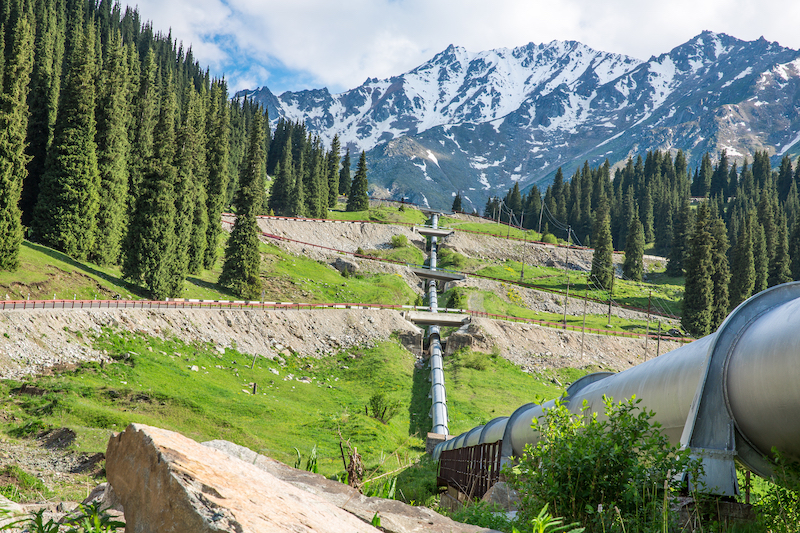July 2020, Vol. 247, No. 7
Pipeline Profile
Guest Commentary: The Two-Front War on Pipelines
Perspective
Toby Mack, President & CEO, Energy Equipment and Infrastructure Alliance (EEIA)
Pipeline opponents have raised their game, skillfully and aggressively scoring wins against projects on two fronts: in the courts and regulatory proceedings on both the federal and state sides.

To counter this threat, groups representing industries that build, operate and benefit from pipeline infrastructure must work in closer coordination and with greater resources. One possible approach is creating a broadly supported entity that is wholly focused on litigating anti-pipeline suits and countering regulatory challenges.
In a good example of what can result from coordinated industry action, the U.S. Environmental Protection Agency (EPA) recently adopted new rules clarifying states’ roles in issuing water quality permits for pipeline projects under the Clean Water Act’s Section 401 certification process. The changes close loopholes exploited by some states, either to deny project permits on grounds other than water quality or to avoid limits that are too vague regarding the amount of time allowed for certification decisions.
For example, states politically adverse to pipelines, including New York and New Jersey, have refused to issue water quality certifications on grounds that projects would adversely affect air quality and contribute to climate change, neither of which are within the scope of the Clean Water Act.
With respect to the one-year time limit for permit decisions, unfriendly states can wait until just before the clock runs out and then inform the developer that more information is required for a decision. This forces the developer to withdraw and resubmit the application, restarting the one-year clock, with the states repeating the process at the end of the next one-year window. The obvious goal is to delay the project to death.
Both gambits are precluded by the new rules. Now the offending states are crying “foul,” claiming their states’ rights have been infringed upon, apparently meaning their right to game the system and exploit ambiguities in the old law to block essential energy infrastructure on political grounds.
But the new rules set up the inevitability of yet another pipeline-related showdown in the federal courts. Opposition interests are poised to bring suit against the EPA seeking an injunction and/or a challenge to the merits of the rules, or the process by which they were adopted.
The tactic is to use the judicial system’s notoriously slow-moving processes and multiple levels of appeal to delay projects to death. Pipeline opponents have discovered that this is the most effective weapon in their arsenal. Old tactics of demonstrating on the right-of-way, chaining themselves to trees and equipment, and even sabotaging physical facilities, are seldom seen today simply because they yield few tangible results.
But opposition challenges asking courts to toss out permits and invalidate the permitting process itself have yielded a bounty of rulings against our industry by sympathetic judges. The poster child for anti-pipeline judicial bias is Montana Federal District Court Judge Brian Morris, who recently “vacated” not only the water-crossing permits issued by the Army Corps of Engineers for Keystone XL, but the Corps’ permits for virtually every other project under the Nationwide Permit 12 program.
Other recent high-profile victims of adverse court rulings based on questionable merits include the Atlantic Coast Pipeline, PennEast Pipeline and Mountain Valley Pipeline.
Every major project requires hundreds of permits – federal, state and local – before construction can begin. Opposition groups parse every permit for potential legal vulnerability, typically claiming insufficient information provided by the applicant, inadequate due diligence by the permitting body or too-limited opportunities for public participation in the process.
They find a judicial venue likely to give their claims a friendly reception, and the process begins, all too often resulting in a permit being vacated and returned to square one to cure the alleged defect. Then, the application is restarted and the review process is renewed.
While this has led permit applicants and permitting bodies to try to “bullet-proof” their processes, pipeline proponents too often play catch-up against an evermore aggressive, better-funded, battle-hardened opposition. Nearly every permit is contested, and often opponents have unlimited resources to bring legal challenges at every step in the process.
This leads to an inescapable conclusion. All segments of the industries that contribute to the creation of pipeline infrastructure, or that benefit from that infrastructure, must recognize their stakes in getting ahead of the opposition, rather than scrambling to deal with each court or state regulatory agency challenge as it arises.
It makes sense that the diverse interests we represent come together and create an entity that is wholly focused on aggressive litigation of anti-pipeline suits and regulatory challenges. Imagine a pipeline stakeholder operation akin to the Southern Environmental Law Center, which litigates many of the opposition lawsuits, sometimes with seemingly limitless resources to do so.
Such an industry legal advocacy entity would need to be well-funded and staffed with top-notch legal expertise and deep knowledge across the energy infrastructure spectrum.
To use a military analogy, when someone declares war on you, it’s better to have a well-trained and equipped standing army and navy ready to deploy than having to start with new recruits and no equipment.





Comments